Star-shaped finger weeder for perennial plants (large diameter)
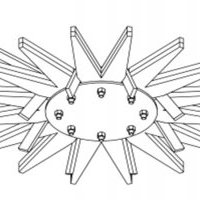
Consisting of semi-flexible fingers which rotate around the plants and are usually mounted on legs which follow the micro-topography of the soil, star-shaped finger weeders are implements which have already been helping deal with grass control in rows of crops for decades, working very close to the crops.
CLICK HERE TO DOWNLOAD THE LATEST VERSIONS OF THE PLANS
Please note that this article is devoted to large diameter star-shaped finger weeders, suitable for perennials. For star-shaped finger weeders, suitable for annual crops click here.
The principle saw the light of day in the 1950s in North America (Buddingh weeder); it was subsequently taken up and commercialised by European firms who made their own contribution to the principle (Steketee, Kress by KULT). Conforming with the principles of l’Atelier Paysan. In line with the principles of l’Atelier Paysan, the versions which we show you here are of course made available under Creative Commons, as are the rest of our outputs which can be reproduced according to self-build principles.
How does it work?
The star-shaped weeders are mounted in pairs for market-gardening or perfumed, medicinal or aromatic plants (PPAM) – one unit on either side of the row can also be used as single units or in conjunction with other cultivation implements (weeding between the rows for example). The nature of the crops (annual or perennial) determines the choice of the size of the fingers, which are cut out of worn quarry conveyor belts (to be used as a single or double layer depending on the size) and giving the belts a new lease of life. Developed in the wider context of a participatory and open conception of tools for organic agriculture (market gardening, medecinal plants and vineyards in particlar as regards star-shaped weeders), these implements form part of a wider whole and contribute to the general debate about weed control. Small diameter finger weeders are shown here, using one layer of belt (to be contrasted with the set-up for perennial plants where two layers of quarry conveyor belt are used).
Our main material resource is re-used quarry conveyor belts. These belts are recycled and can be easily obtained for a nominal sum. The belts can be cut up readily using a band saw, but a good jig saw can also be used if it is on the fastest speed setting and is equipped with the appropriate blade (large teeth). The star-shaped weeders can also be made from other materials of comparable strength and suppleness. The articulated support is adjustable in every direction and can also be fitted with finger weeders widely available on the market
The group of wine growers from St Joseph, who played a key role in the self-build assembly of these weeding tools, opted for a design featuring a very adaptable and easily adjustable platform, to meet the varying conditions of local vineyards. In this way it is possible to adjust the pressure exerted on the rows of vines, depending on whether the vines in question are young plantations or well established. The use of a parallelogram as a base means that the unevenness of the land can be closely followed without the driver needing to intervene or control. Similarly, the angle of attack (or tilt of the finger weeder) is very easy to adjust, depending on the amount of weeds or the profile of the ‘cavaillon’.
All these adjustments, once mastered, make it easier to use two star-shaped fingers concurrently to weed both sides of the row of vine at each passage, leaving more time to concentrate on driving the tractor: you drive and the work will look after itself!
The detailed plans and photographs describe all the stages of the construction of the implements.
The belts can be cut up readily using a band saw, but a good jig saw can also be used if it is on the fastest speed setting and is equipped with the appropriate blade (large teeth).
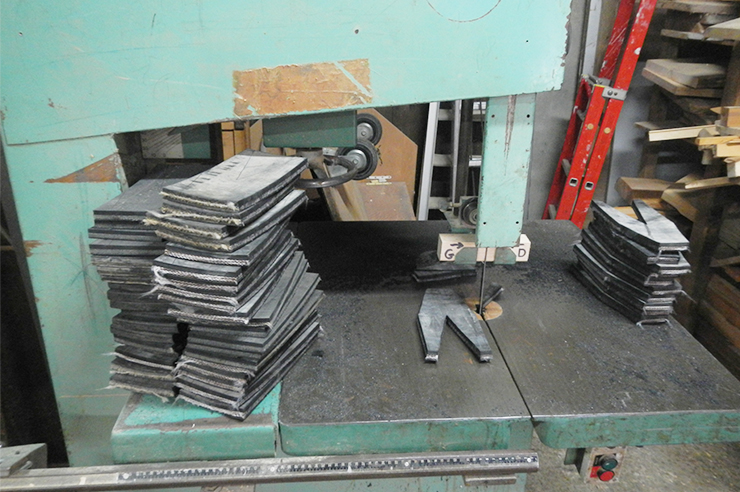
The most delicate operation is without a doubt the gluing of the two layers of belt to achieve a rigidity and sufficient strength to attack the weeds. Thorough cleaning and good glue, specified for gluing rubber, are vital!

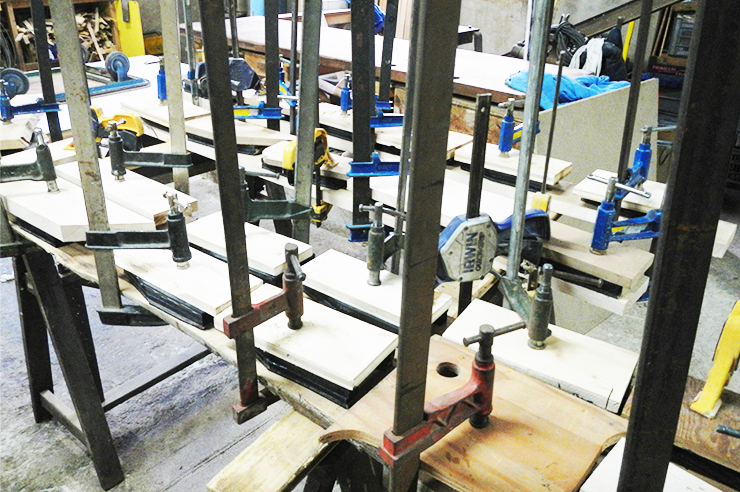
Now for assembly.
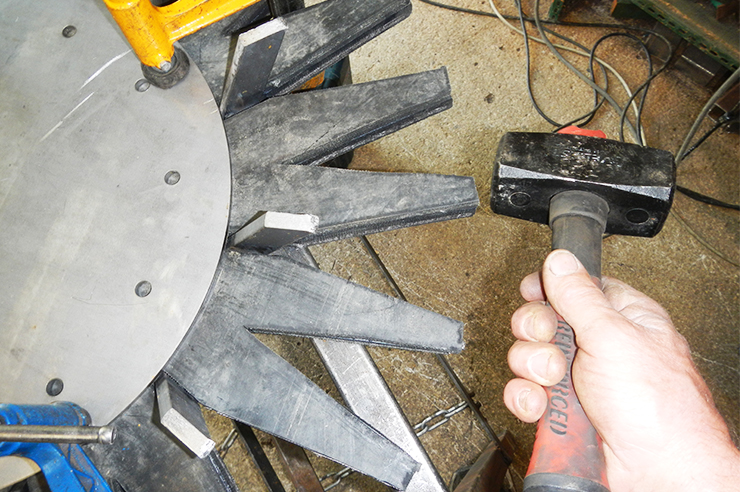
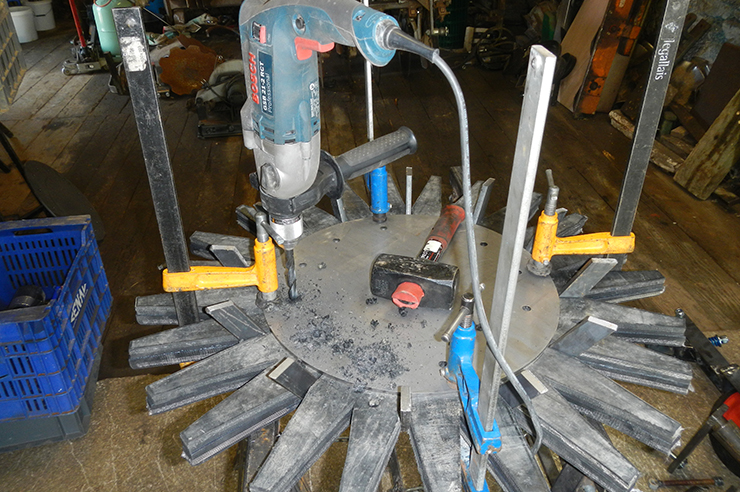
Then angle-grinding the edges.
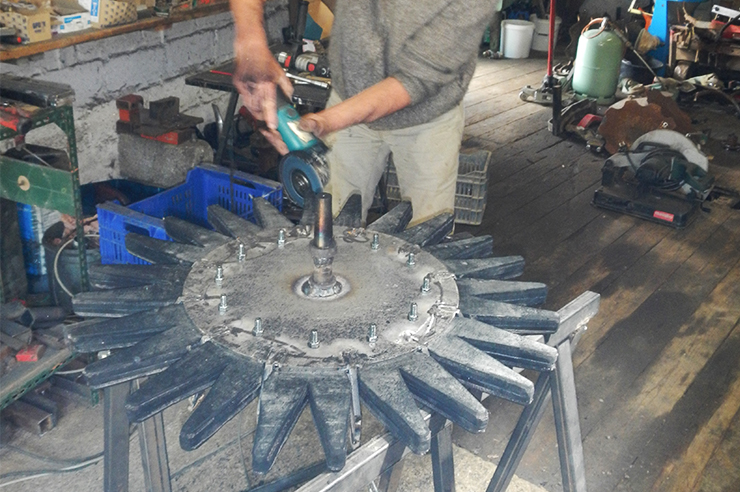
The star-shaped finger weeders can be mounted on a simple beam, in front or behind the tractor, or combined with other implements.
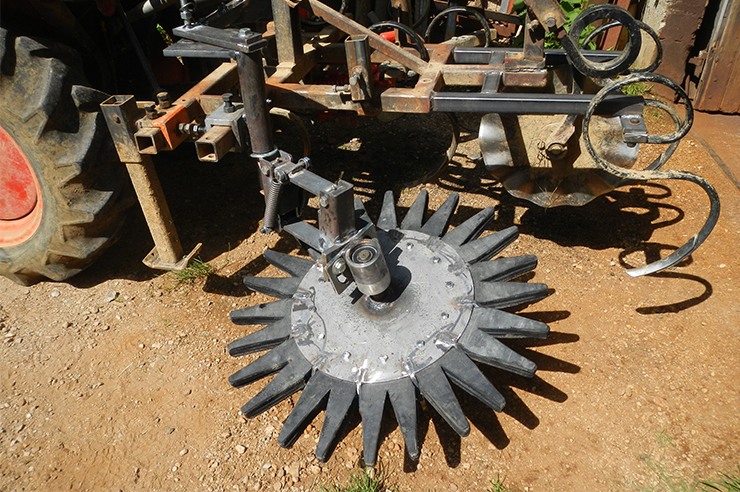
(This star, in its earliest version, is 75cms in diameter. The model described in the plans below is of the same diameter, but has longer fingers which penetrate the soil between the vines better).
La vitesse est déterminante dans l’efficacité de ce type d’outil ; elle doit être de minimum 5 km/h.
Speed is of the essence in the efficiency of this kind of implement ; it should be at least 5km per hour.
The videos shot at Antoine Pignier’s allow you to see these star-shaped weeders in action.
The plans which we have prepared are the fruit of an iterative process and have progressed from the models installed on the Dahu in the St Joseph and the model trialled on the Pignier estate. Modifications carried out here and there are bound to improve performance, which also benefits the common cause (Communs).
This work benefits from European funding and the Réseau Rural National, through the ‘Mobilisation Collective pour le Développement Rural coordinated by l’Atelier Paysan’ on "L’innovation par les Usages, un moteur pour l’agroécologie et les dynamiques rurales" (2015-2018), of which the FNCUMA, the FADEAR, l’InterAFOCG, AgroParisTech and the CIRAD are all partners. The content will be regularly updated throughout the project.
Here is a link towards our partners’ page: http://www.latelierpaysan.org/Nos-partenaires

DOWNLOADABLE DOCUMENTS
• Support for star-shaped articulated weeders (pdf - 200 ko)
• Star-shaped weeders (pdf - 260 ko)
• Large axle (pdf - 60 ko)







